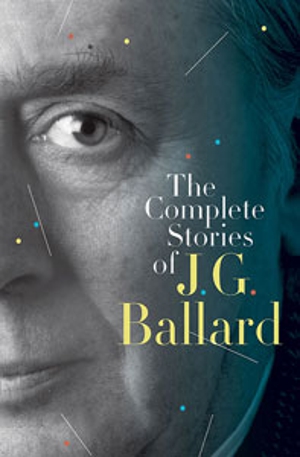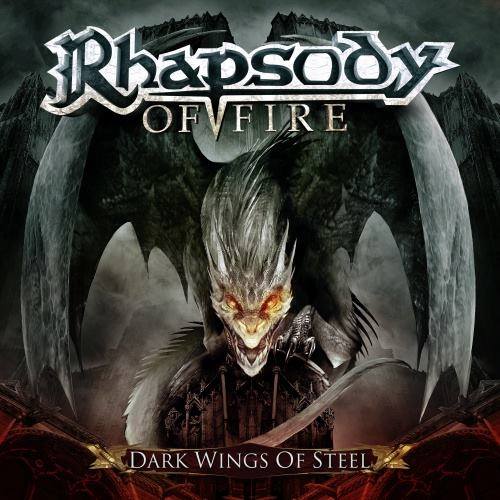 I don’t know if this really is his complete stories. It’s 1200 pages and the print’s really small.
I don’t know if this really is his complete stories. It’s 1200 pages and the print’s really small.
Ballard was either a genius or a near genius, and possessed an incredible imagination. Reading him gets uncomfortable, because my weaker imagination suffers feelings of inadequacy. I feel like a Commodore 64 downloading data from a CRAY supercomputer.
SF has historically come in two branches. The first deals in speculation, the second in reflection. The first deals in “what if” scenarios and whimsies of the imagination, the second deals with apocalypses and dystopias and the real-world consequences of those whimsies. Ray Bradbury and Arthur C. Clarke are masters of the first type, Harlan Ellison and John Christopher masters of the second, but JG Ballard did both styles really well. He writes mind-candy that’s also a poison pill – even his unabashed SF efforts are shot through with unease and disquiet, if not outright horror.
The first two stories are pleasant, then we get to “Concentration City” – a stark tale about a man trying to escape a claustrophobic urban jungle that seems to extend to infinity in every direction. Similar themes appear in a later story called “The Enormous Space”, which is about the discovery of a strange space station, about five hundred meters across. Astronauts land on it, and start exploring. The more the station is examined, the bigger it seems to be, until eventually it seems to enclose the entire universe.
And so on. Not all the stories are great, but even the mediocre ones have imagination, inventiveness, and the frisson of discovery. The 98 stories are in roughly chronological order, which breaks up the flow of the original collections but allows the opportunity to watch his style evolve, from his nostalgic golden age SF stories to his surreal, post-modern phase. His best stories contain elements of both periods. Ballard was an ideas man, but also something of a literary bridge-builder.
That’s a good thing, because although Ballard’s imagination was superhuman, as a writer he was merely adequate. Among other things, Ballard’s prose has a lot of disconnected metaphors – odd, confusing similes that are unrelatable to the object in the sentence. Stephen King gave a funny example in On Writing – “He sat stolidly beside the corpse, waiting for the medical examiner as patiently as a man waiting for a ham sandwich” – and Ballard is nearly as bad sometimes. A few paragraphs into “Prima Belladonna” and I was hit with “When I went up I found them grinning happily like two dogs who had just discovered an interesting tree”…what does that mean? Did they need to use the bathroom? In “The Time Tombs” a character says “after five minutes he drains me like a skull.” Out of all the drainable things in the world – sieves, basins, what have you, why a skull? What’s the illuminating connection there? Ballard’s writing is often good, but it often has a careless, smashed-out-at-120-words-a-minute quality, as if the ideas were too hot to stay inside Ballard’s brain and had to be put on the page as soon as possible.
Given the strength of some of these stories, I can’t blame him. But he’s the kind of writer where you have to ignore the trees and look at the forest – his ideas and imaginings are better than his sentences and his paragraphs. But when Ballard is on point, his ideas and imaginings are better than nearly everyone else. This is an amazing collection and should be sought out ahead of any of his novels.
No Comments »
 Rhapsody of Fire recorded together for nearly twenty years, and seemed like they’d last forever. But, as Hewlett-Packard Lovecraft said, even death may die. The band schismed in 2011, with guitarist Luca Turilli and keyboardist Alex Starapoli forming separate versions of Rhapsody. Dark Wings of Steel is the first Luca-less album. Call it a “friendly split”, whatever. We all know there’s a shocking story involving a haddock, a pressurized pump, and the bassist’s mother in there somewhere.
Rhapsody of Fire recorded together for nearly twenty years, and seemed like they’d last forever. But, as Hewlett-Packard Lovecraft said, even death may die. The band schismed in 2011, with guitarist Luca Turilli and keyboardist Alex Starapoli forming separate versions of Rhapsody. Dark Wings of Steel is the first Luca-less album. Call it a “friendly split”, whatever. We all know there’s a shocking story involving a haddock, a pressurized pump, and the bassist’s mother in there somewhere.
Looks like Nuclear Blast made the right call by going with Turilli’s Rhapsody, because this album is chintzy, cheap-sounding, and unworthy of the Rhapsody of Fire name. The band literally comes up short of Triumph and Agony (rightly regarded as their worst album up to this point). Where to begin? It’s Situation Abnormal, All Fucked Up.
The production is not dense and layered, as in past albums. The symphonics aren’t “real orchestra” so much as “real VST samples on Starapoli’s computer.” Dark Wings has a fake, synthetic quality that I dislike immensely. And what’s with the crappy brutal guitar tone? Rhapsody was never famous for its guitar sound, but at least Turilli’s tone fit with the massive orchestral and symphonic backdrops. New guitarist Roby De Micheli has a dry, midscooped sound reminiscent of a Crate practice amp – annoying and inappropriate. Add in weak-as-fvck drumming that couldn’t knock the froth off a double-latte, and you have the new Rhapsody – an album that’s sure to have elderly neighbours banging on your door, demanding that you turn it up to help facilitate their afternoon nap.
Two good songs – that’s it. Not three, four, or five. Two. The first is “A Tale of Magic”, which has an excellent chorus. The second is “Dark Wings of Steel”, with fast zigzagging rhythms and interesting contrapuntal ideas.
The other songs are like quarantined hospital patients dying of various diseases. Some are poorly written and forgettable, with no catchy parts or good hooks. Others try far too hard to be Rhapsody and provoke laughter – “Silver Lake of Tears” is particularly horrible. Rhapsody’s music is almost parodic already, taking the joke any further is crass. Fabio Leone’s vocals are still powerful, but he’s an overrated singer and he’s really exposed in this new stripped-back format. The shitbox production kills any atmopshere.
Last year Luca Turilli’s Rhapsody released Ascending to Infinity, which got right everything this new Rhapsodomy album gets wrong. It has lush, organic production, great songs, excellent playing, and a cohesive musical style. Ascending didn’t quite match Rhapsody’s best work, but it utterly embarasses Starapoli on this new release.
Are you a fan? Go listen to whatever Luca Turilli is working on, because HE is Rhapsody of Fire. Everyone else was dead weight, and this album proves it.
The good news: Megadeth and Black Sabbath both have new albums out, so this isn’t quite the disappointment of the year
No Comments »
 In 2006, Chris and his virtual band of hedgehogs set the world on fire. Now, they’re ready to do it all again – and no troll, no jerk, no pair of DIRTY, CRAPPED BRIEFS will get in their way.
In 2006, Chris and his virtual band of hedgehogs set the world on fire. Now, they’re ready to do it all again – and no troll, no jerk, no pair of DIRTY, CRAPPED BRIEFS will get in their way.
While the first album had Chris singing karaoke-style over Britney Spears and Backstreet Boys songs, Chris’s tastes have broadened (like his physique) and now includes artists like Madonna, Meatloaf, and Bruce Springsteen. “Trollsta’s Paradise”, is sung over “Gangsta’s Paradise” by Coolio, and is a blistering attack on the trolls and 4channers who have made his life a misery. Chris might hate black people, but that doesn’t mean he can’t appreciate gangsta rap, just as hating gay people has never stopped him from putting objects up his ass on occasion. You have to be open-minded about some things.
The next song is a remake of “Like a Virgin”, a topic Chris can speak on with some authority. Chris’s dulcet tones are hard to hear on this one, Madonna’s voice is about twice as loud as his mic volume. There’s one song that has Chris singing without any musical accompaniment – a creepy cover of Minnie Riperton’s “Loving You” where he sounds like Herbert from Family Guy. Doesn’t Herbert have a crush on a character called Chris? There you go, then.
This album comes from the period when he was dating a girl troll called Ivy, and his new amorata finds her way into many of the modified lyrics. “I’m Sexy For My Ivy” is sung over Justin Timberlake’s “Sexyback”, which was a hit song merely three years prior to this “album” being made – remarkably early to the party by Chris’s standards. He has some trouble remembering his own lyrics and staying on the beat. I blame young love.
Ivy apparently owns a pair of hermit crabs called Crass and Champ, and Chris really took a liking to them. Meatloaf’s “Paradise by the Dashboard Light” gets redone into a song about the crabs making love at the beach. I don’t know if Ivy ever got around to telling Chris that Crass and Champ are both male.
The album is curious in that it could be interpreted as Chris finally starting to grow up. Hardly any of the songs are about videogames or pokemon or Sonichu. The only time Chris’s fictional characters get to strut their stuff is in the final song, “Punchy and Layla’s Dance In The Dark,” where they do a lot more than strutting. The final lyrics are “I’ll throw my best punches!
Hwah! Hwah!” Can someone get Layla to a battered woman’s shelter?
Surely no recommendation is needed, but suffice to say that the Hedgehog Boys have done it again. Get this album now, and please don’t put it up your ass.
No Comments »
 I don’t know if this really is his complete stories. It’s 1200 pages and the print’s really small.
I don’t know if this really is his complete stories. It’s 1200 pages and the print’s really small.
 Rhapsody of Fire recorded together for nearly twenty years, and seemed like they’d last forever. But, as Hewlett-Packard Lovecraft said, even death may die. The band schismed in 2011, with guitarist Luca Turilli and keyboardist Alex Starapoli forming separate versions of Rhapsody. Dark Wings of Steel is the first Luca-less album. Call it a “friendly split”, whatever. We all know there’s a shocking story involving a haddock, a pressurized pump, and the bassist’s mother in there somewhere.
Rhapsody of Fire recorded together for nearly twenty years, and seemed like they’d last forever. But, as Hewlett-Packard Lovecraft said, even death may die. The band schismed in 2011, with guitarist Luca Turilli and keyboardist Alex Starapoli forming separate versions of Rhapsody. Dark Wings of Steel is the first Luca-less album. Call it a “friendly split”, whatever. We all know there’s a shocking story involving a haddock, a pressurized pump, and the bassist’s mother in there somewhere.